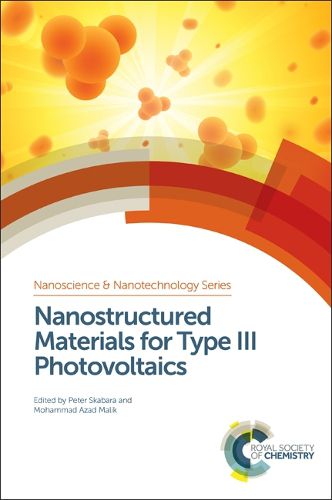Readings Newsletter
Become a Readings Member to make your shopping experience even easier.
Sign in or sign up for free!
You’re not far away from qualifying for FREE standard shipping within Australia
You’ve qualified for FREE standard shipping within Australia
The cart is loading…






Materials for type III solar cells have branched into a series of generic groups. These include organic ‘small molecule’ and polymer conjugated structures, fullerenes, quantum dots, copper indium gallium selenide nanocrystal films, dyes/TiO2 for Gratzel cells, hybrid organic/inorganic composites and perovskites. Whilst the power conversion efficiencies of organic solar cells are modest compared to other type III photovoltaic materials, plastic semiconductors provide a cheap route to manufacture through solution processing and offer flexible devices. However, other types of materials are proving to be compatible with this type of processing whilst providing higher device efficiencies. As a result, the field is experiencing healthy competition between technologies that is pushing progress at a fast rate. In particular, perovskite solar cells have emerged very recently as a highly disruptive technology with power conversion efficiencies now over 20%. Perovskite cells, however, still have to address stability and environmental issues. With such a diverse range of materials, it is timely to capture the different technologies into a single volume of work. This book will give a collective insight into the different roles that nanostructured materials play in type III solar cells. This will be an essential text for those working with any of the devices highlighted above, providing a fundamental understanding and appreciation of the potential and challenges associated with each of these technologies.
$9.00 standard shipping within Australia
FREE standard shipping within Australia for orders over $100.00
Express & International shipping calculated at checkout
Materials for type III solar cells have branched into a series of generic groups. These include organic ‘small molecule’ and polymer conjugated structures, fullerenes, quantum dots, copper indium gallium selenide nanocrystal films, dyes/TiO2 for Gratzel cells, hybrid organic/inorganic composites and perovskites. Whilst the power conversion efficiencies of organic solar cells are modest compared to other type III photovoltaic materials, plastic semiconductors provide a cheap route to manufacture through solution processing and offer flexible devices. However, other types of materials are proving to be compatible with this type of processing whilst providing higher device efficiencies. As a result, the field is experiencing healthy competition between technologies that is pushing progress at a fast rate. In particular, perovskite solar cells have emerged very recently as a highly disruptive technology with power conversion efficiencies now over 20%. Perovskite cells, however, still have to address stability and environmental issues. With such a diverse range of materials, it is timely to capture the different technologies into a single volume of work. This book will give a collective insight into the different roles that nanostructured materials play in type III solar cells. This will be an essential text for those working with any of the devices highlighted above, providing a fundamental understanding and appreciation of the potential and challenges associated with each of these technologies.